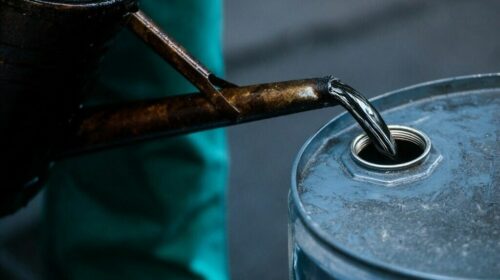Petrol prices have been increased again to cross the mark of Rs 147 per litre, while diesel remains cheaper by a few rupees. International prices have increased as well. In the light of general inflation, the price increase has not been well taken by the people at large.
Contrary to the popular discourse, POL and products’ prices are still cheaper in Pakistan as compared to those in the region (even the US probably. Petroleum prices in India are more than 60 percent higher. Piped gas for residential sector is 78 percent higher if compared to highest gas price slab in Pakistan. For poor, Pakistan gas prices are several times lower than India; the latter does not offer any concession to the poor in this respect.
Only in case of LPG, Indian prices are 74 percent than those of Pakistan’s — 24 percent cheaper. This is perhaps due to market imperfections which can be possibly corrected. India also offer 50 percent subsidy to the poor for one cylinder per month.
Sri Lanka has the lowest price of diesel (0.598 USD/L) in the selected group of countries; 23 percent lower than Pakistan. Sri Lanka is an outlier in the group. It has traditionally kept its diesel prices lower and lowest in the region. There appears to be some subsidy involved in this respect.
On the other hand, most countries in the world, including Europe’s, have kept Diesel’s prices lower as compared to those of Gasoline. The argument is that Diesel is used in public and goods transportation. Thus there is a welfare context and also cost competitiveness for keeping inflation low and for exports. In Pakistan, we used to have the same sometimes back.
However, environmental lobbyists, possibly under IFIs’ (International Financial Institutions’) guidance, made us change the policy. Our prices of Diesel and Gasoline are kept the same now. Perhaps, it is time to have a look on the issue in view of the current account deficit and inflation issues.
The opportunity to revise the policy would be when there are lower prices and higher taxation which may allow differentiation in taxes. At higher prices and lower taxation, such an opportunity does not exist.
In South Asia, India’s petroleum prices are the highest: Gasoline’s 73 percent higher and diesel’s 48 percent. In Bangladesh, gasoline’s prices are 30 percent higher and diesel’s 13 percent. A common feature in South Asian pricing is lower diesel pricing either through subsidy or higher taxation on diesel.
It would be useful to examine the pricing behavior in South East Asia where export promotion and competitiveness are major issues — Vietnam, Thailand and the Philippines. As expected, Vietnam’s Diesel prices are 5% lower than Pakistan’s and the lowest in South East Asia. Gasoline prices in this group are 30-50 percent higher than those in Pakistan.
The US prices are considered moderate with some taxation. The US’ petroleum prices have been lower than those in OECD (Organization for Economic Cooperation and Development) countries. The US pricing policy does not differentiates between diesel and gasoline taxation and pricing, while Europe has been keeping higher taxation and pricing and also more taxation on gasoline than on diesel.
In Europe, taxation and prices of petroleum have been the lowest. Gasoline’s prices in Spain are 1.716 USD/L, i.e., 115 percent higher than in Pakistan, while diesel’s are lower at 1.581 USD/L, 92 percent higher than those in Pakistan. In Italy and most other European countries, gasoline’s prices are USD 2.0/L or even more; 151 percent higher than those in Pakistan.
Admittedly, one has to have an eye on the income and affordability aspect. One cannot meaningfully and rationally compare prices with richer countries. However, the argument cannot be taken too far. Petroleum is mostly imported in Pakistan. The government is already suffering under the load of circular debt caused by subsidies and lower prices of electricity and gas for the eligible low income groups.
Additionally, gas tariffs for fertilizers have been kept lower for keeping the fertilizer’s prices lower and thus lower food prices. Thus, there is hardly any fiscal space in this respect.
The taxation (Petroleum Levy) has been in the range of 0-30 Rs per liter while GST at 17.5%.The lowest pricing possibility is of zero taxation which may be applied in extreme emergencies, e.g., if the international crude prices soar to as high as USD 100 per barrel.
In times of lower oil prices, even higher GST up to 35 percent has been charged in 2014, etc. Recently, PL has almost been zero due to high oil prices; however, there is pressure now from the IMF (International Monetary Fund) to increase taxation on POL and products irrespective of prices.
Thus, it appears that petroleum pricing and taxation are making a lot sense. The affordability issue has been caused by currency depreciation. Petroleum prices are low and reasonable in USD terms, but the same are high in terms of local prices.
The issue is common with inflation in other areas as well. Thus, it appears that nothing better can be done in the area of petroleum pricing and taxation. The solution lies elsewhere in economic growth and higher employment and wages, a marked reduction in imports and an increase in exports which may keep the currency at a reasonable level.







